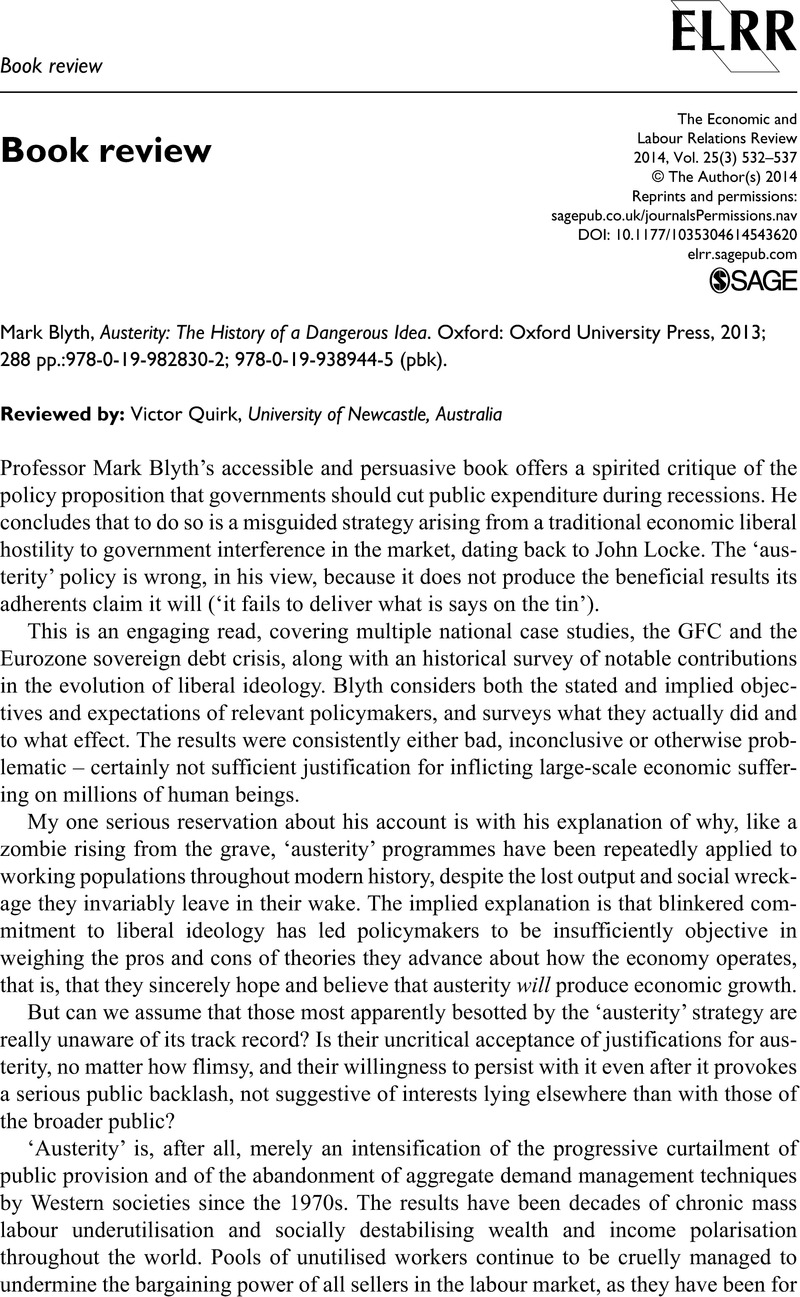No CrossRef data available.
Article contents
Mark Blyth, Austerity: The History of a Dangerous Idea. Oxford: Oxford University Press, 2013;288 pp.:978-0-19-982830-2; 978-0-19-938944-5 (pbk).
Review products
Mark Blyth, Austerity: The History of a Dangerous Idea. Oxford: Oxford University Press, 2013; 288 pp.:978-0-19-982830-2; 978-0-19-938944-5 (pbk).
Published online by Cambridge University Press: 01 January 2023
Abstract
An abstract is not available for this content so a preview has been provided. Please use the Get access link above for information on how to access this content.

- Type
- Book review
- Information
- The Economic and Labour Relations Review , Volume 25 , Issue 3: Special issue - Crisis, Austerity, Neoliberalism and alternatives , September 2014 , pp. 532 - 537
- Copyright
- © The Author(s) 2014
References
Alesina, A, Ardagna, S (1998) Tales of fiscal adjustment. Economic Policy 13(27): 489–585.Google Scholar
Alesina, A, Perotti, R
(1995) Fiscal expansions and fiscal adjustments in OECD countries. NBER working paper 5214. Cambridge, MA: National Bureau of Economic Research.CrossRefGoogle Scholar
Centre of Full Employment and Equity (2013) http://e1.newcastle.edu.au/coffee/ (accessed 1 June 2014).Google Scholar
Giavazzi, F, Pagano, M
(1990) Can severe fiscal contractions be expansionary? Tales of two small European countries. NBER Macroeconomics Annual. Cambridge, MA: National Bureau of Economic Research, pp. 75–122.Google Scholar
Kalecki, M
(1943 [1990]) Political aspects of full employment. In:
Kalecki, M
(ed.) Collected Works of Michal Kalecki. Volume 1: Capitalism, Business Cycles. Oxford: Clarendon Press (Essay first published in (1943) Political Quarterly 14(4): 322–331).Google Scholar
Mitchell, WF
(various dates) Modern monetary theory. Billy-blog. Available at: http://bilbo.economicoutlook.net/blog/ (accessed 1 June 2014).Google Scholar
Organisation for Economic Cooperation and Development (OECD) (1970) Inflation: The Present Problem. Paris: OECD.Google Scholar


